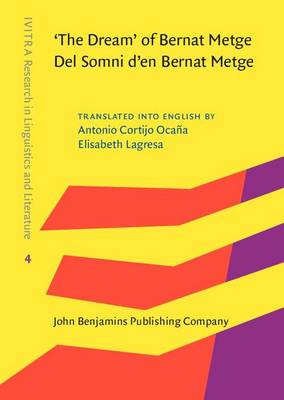Ivitra Research in Linguistics and Literature
2 primary works
Book 4
Lo Somni (The Dream) is a dream allegory divided into four chapters or books. It was written ca. 1399 and is considered Bernat Metge's best work. It is extremely innovative within the context of Catalan (and Iberian Peninsular) literature of the 1300's. It consists of a dialogue between Metge-the-character and several participants (in fact the book is a dialogue between Metge and the Classical and Biblical tradition) on the topics of the immortality of the soul, the essence of religion and the dignity and moral essence of the human being. In addition to using many Classical and medieval literary sources, Lo Somni can be considered one of the first (if not the first) Humanist books to be ever written in the Iberian Peninsula. Metge wrote Lo Somni supposedly while in prison (house arrest?) following a dubious accusation about his involvement in the death of King Joan I. Metge wrote this work as a personal defense to exonerate himself and as an attempt to gain the confidence of the new King Marti l'Huma and his wife Queen Maria de Luna. Lo Somni ends when Metge-the-character is awaken from his dream. This foundational work also touches upon political themes pertaining to the Crown of Aragon, literary fashion and reception of Italian humanist works at the court, as well as on matters of fashion, cultural customs, taste and style.
Book 6
These new translations of Bernat Metge's Libre de Fortuna e Prudencia (1381) into Spanish (verse) and English (prose) make this key early work by 14th-century Catalonia's most challenging writer available to the wider audience it has longed deserved. As with Metge's masterwork, Lo somni (The Dream), recently translated by Cortijo Ocana and Elisabeth Lagresa (Benjamins, 2013), the writing of The Book of Fortune and Prudence seems to have been precipitated by a larger crisis in Catalan society, in this case, an all-too-familiar-sounding banking crisis. Drawing on sources ranging from Boethius, to the Roman de la Rose to Arthurian fable, Metge unveils the workings of the world through his two allegorical women, Fortune (good and bad) and Prudence, in a search for consolation in the midst of inexplicable reversals of fortune--those of others, and perhaps his own. But as in the Somni, Metge refuses here to offer pat solutions to the crises of his day, offering what is perhaps one of our earliest glimpses of the impact of new ideas coming from Italy in the Iberian Peninsula. The work is written in the popular noves rimades form (octosyllabic rhymed couplets) in the challenging mix of Occitan and Catalan common to verse writing in 14th century Catalonia. Cortijo's and Martines's tri-lingual edition, together with its fine introduction and notes, is an extremely valuable contribution as it makes this unduly neglected text of the later Iberian Middle Ages available for students and other readers in a broadly accessible, yet scholarly, form. (Prof. John Dagenais, UCLA)

